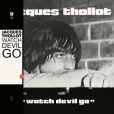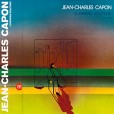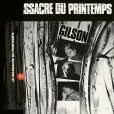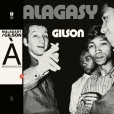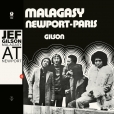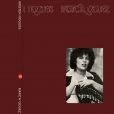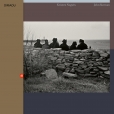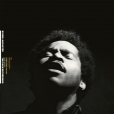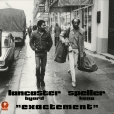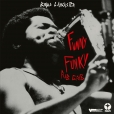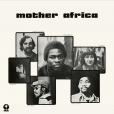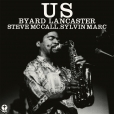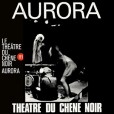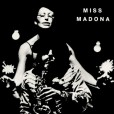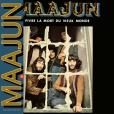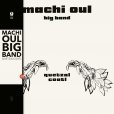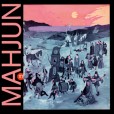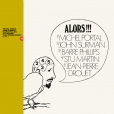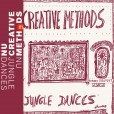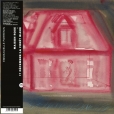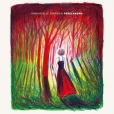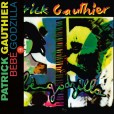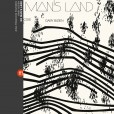Your basket is empty

‘Four years after a first album on the Futura label in 1971, Jacques Thollot returned, this time on the Palm label of Jef Gilson, still with just as much surrealist poetry in his jazz. In thirty-five minutes, the French composer and drummer, who had been on the scene since he was thirteen — recording Gilson LPs when he was just sixteen — established himself as a link between Arnold Schoenberg and Don Cherry. Resistant to any imposed framework and always excessive, Thollot allows himself to do anything and everything: suspended time of an extraordinary delicacy, a stealthy explosion of the brass section, hallucinatory improvisation of the synthesisers, tight writing, teetering on the classical, and in the middle of all that, a hit, the title-track — which Madlib would one day end up hearing and sampling.
‘In a career lasting half a century, centred on freedom, Jacques Thollot played with a roll-call of key experimental musicians (Don Cherry, Sonny Sharrock, Michel Roques, Barney Wilen, Steve Lacy, François Tusques, Michel Portal, Jac Berrocal, Noël Akchoté...) who all heard in him a pulsation coming from another world.’
The fabulous, legendary LP originally issued by Lumen in 1972, born out of several visits to Madagascar by Gilson and fellow musicians from Paris, and their collaborations with musicians on the island.
Fittingly the first trip was on May 13 1968, the day of the general strike in France: this is tumultuous, insurgent, joyous, blisteringly swinging, outernational Malagasy jazz, including a a charged, unmissable The Creator Has A Masterplan, and Avaradoha, a composition by Madagascan saxophonist Serge Rahoerson (who leads this recording), which was the anthem of the rotaka protests in 1972, bringing down the neo-colonial First Republic of Madagascar. The closer showcases various traditional Madagascan percussion instruments, played by the same trio which that year recorded Le Massacre Du Printemps, Gilson’s avant-noise homage in memoriam of Stravinsky.
Hot.
Jef Gilson, Sylvin Marc and his cousin Ange Japhet, Del Rabenja, Gérard Rakotoarivony and Frank Raholison, blending together bebop, sub-Saharan roots and electric funk.
Requiem Pour Django, Dizzy 48 and Anamorphose — renamed Salegy Jef after this re-routing via Madagascar — rejuvenate Gilson compositions from the previous couple of decades. Newport Bounce is a reworking of Interlude, recorded by Gilson in 1969 with Philly Joe Jones. Le Newport was a club in rue Grégoire de Tours, Saint Germain des Prés.
The Celtic harpist leading a dozen friends — guitar, piano, violins, flutes, zarb, zither — in spell-binding departures from Breton folk-song, originally released in 1976 but fresh and strange as a vermillion hydrangea in full bloom.
Noguès was to collaborate with Rabih Abou-Khalil, amongst others, but ‘we are reminded here of the Meredith Monk of Greensleeves, there the early albums of Brigitte Fontaine / Areski, elsewhere Emmanuelle Parrenin, Pascal Comelade… Noguès’ poetry is ever-changing: airy (Hunvre), cosmopolitan (Pinvidik Eo Va C’hemener), enigmatic (Ar Bugel Koar), profound (Ar Gemenerez), enchanting (Hirness An Devezhiou). And then there is Marc’h Gouez itself, between nursery rhyme and chamber music, weaving a fabulous, transfixing web. “Brittany equals poetry,” said André… Breton; and Kristen Noguès proves it to be true.’
Lovely stuff; dream-like, captivating; quite different. Check it out.
‘The forerunner of Maajun. Five musicians — Jean-Pierre Arnoux, Cyril and Jean-Louis Lefebvre, Alain Roux and Roger Scaglia — and three times as many instruments at the service of electric-poetic, guerrilla folk and blues, which evokes the fantasy coming-together of Frank Zappa and Jacques Higelin, Sonny Sharrock and the Art Ensemble Of Chicago.’
“I had to deal personally with my situation as an expatriate, without disavowing it. I tried not to betray my roots, I tried to translate into my music what was essential to me, to reflect my origins — Latin America, its musical and above all human feelings — while remaining faithful to jazz.”
‘Structured free music’, recorded for Palm in January 1975, with producer Jef Gilson at the helm, and the Chilean pianist Manuel Villarroel leading fourteen musicians, including Jef Sicard, François and Jean-Louis Méchali, and Gérard Coppéré, from the earlier Septet formation.
‘From togetherness to dissonance, we dance to Bolerito and shake it up to Leyendas De Nahuelbuta. As for the finale, it is a serpent which is bedazzling and impossible to pin down. To remind ourselves of this, let’s listen to it again.’
Their classic, influential, second Saravah, from 1974, joined by the great Brazilian percussionist Nana Vasconcelos. Leftist folk prog turned outernational psychedelic fusion. Try fourteen-minutes-long La Ville Pue.
The illustrious clarinettist alongside John Surman, Barre Phillips, Stu Martin, and Jean-Pierre Drouet, in 1970. Iconic Futura cover-art by Avoine.
A stunning complement to Theme De Yoyo!
Panou was an activist and actor, in Paris from Benin; he plays a refuse collector in Jean-Luc Godard’s Weekend. His texts here cross existentialism and Black Power like a knockabout Richard Wright, with an extra shot of anti-colonialism. Recorded by Pierre Barouh for Saravah, in the same months as its classic Comme A La Radio LP with Brigitte Fontaine, furthering the AEC’s rowdily brilliant elaborations of Leroy Jones’ Black Dada Nihilismus.
It’s a scorcher; hotly recommended.
Warmly recommended.
Recorded in 1977, the obverse of punk, these are mysterious, gentle songs, simultaneously ancestral and futuristic, occasionally mounting in rhythmic urgency to evoke the Motorik of Faust. (Have a listen to Topaze.) Some were collected by Parrenin in rural communities; others have lyrics by Jean-Claude Vannier, who attended the recording sessions.
The engineer was Bruno Menny — a follower of Xenakis — whose 1972 Cosmographie LP is a landmark in French electroacoustic music. He recorded Parrenin in the converted barn of Jacques Denjean, who worked with Dionne Warwick, Francoise Hardy and the Double Six. (The great Albert Marcoeur recorded two albums there, in Fremontel, Normandy.)
‘If we must risk a few comparisons then Vashti Bunyan, Linda Perhacs, Joanna Newsom, Collie Ryan, Shirley Collins, Trees Community, Sourdeline and Véronique Chalot all spring spontaneously to mind. But this is too reductive for the timeless singularity of Emmanuelle Parrenin.’
Previously unreleased recordings from 1978, 1981 and 1982, conceived for choreographers. The bandoneon-playing of the Argentinian Juan Mosalini, electric piano by Jacques Denjean, electroacoustics by Bruno Menny and Didier Malherbe from Gong are swirled into a mix of spinet dulcimer, flute, hurdy-gurdy and other-worldly singing (amongst other ingredients), all steeped in the sonic atmosphere of a vintage acid-folk freak-out.
Keyboardist with Heldon, Magma and co, joined on his debut LP by the likes of Richard Pinhas and Christian Vander — no less — together with Bernard Paganotti, François Auger, Didier Batard… An outstanding mixture of synthy electronics and jazz-rock. First vinyl issue.

